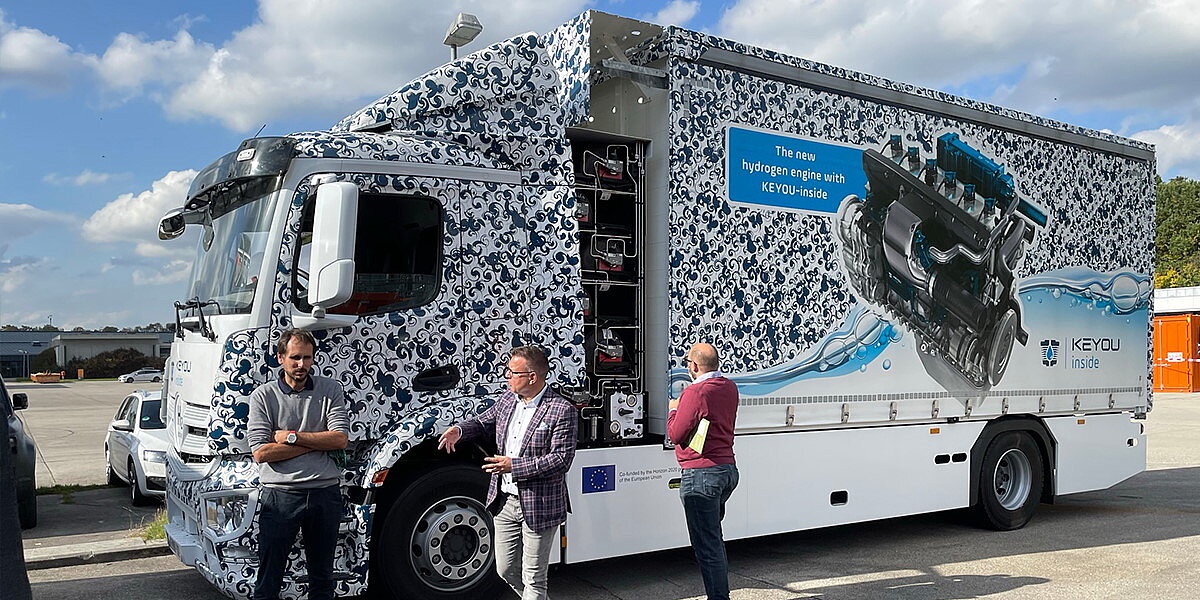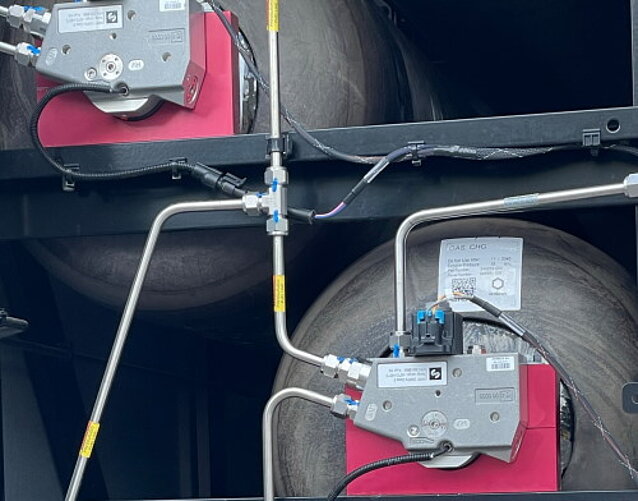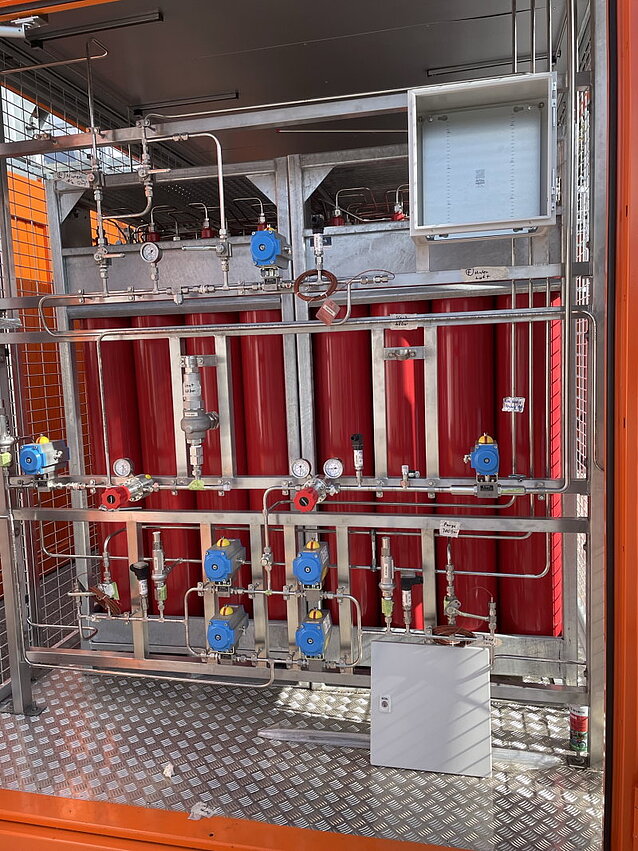Hydrogen tanks - Why hydrogen refueling is not so simple

Everyone is talking about hydrogen technology as the technology of the future. Whether cars, trucks, ships or airplanes, as direct combustion or via fuel cells, hydrogen requires a tank and this must be filled at high pressures. Unless it is a cryogenic tank. There are other issues there and thus another Merkle CAE Solutions blog article. I also have my own opinion on the usefulness of green hydrogen, but that should not be the subject here either.
The geometry of a high-pressure tank for hydrogen at 350 bar is comparatively simple. Why can't the hydrogen simply flow in axially through the valve until the tank is full?
If the refueling takes place very slowly, that's not a problem. But the refueling process should be as fast as possible. After all, time is money and infinite time is very much money, or even a little more.

The problem
However, there is a problem with fast refueling.
The so-called Joule-Thomson effect describes the temperature change of a gas during an isenthalpic pressure reduction. There are gases that become colder when the pressure is reduced (danger of icing) and gases for which the temperature rises. In the case of hydrogen, the temperature rises.
The high inflow velocities, especially in the initial phase, increase the temperature of the hydrogen. With a purely axial feed, the flow collides with the opposite wall, the temperatures are high, as are the heat transfer values, the material heats up locally, expands and the thermal stresses in the tank increase. The technically limiting parameter here is the temperature of the material. In the mobile area of type 4 tank systems, a maximum wall temperature of 85°C is permitted in order to prevent premature ageing of the material.
This means that the volume flow must be severely limited, which would make the filling process take too long.
The standards give clear specifications here as to which temperature limits, but also which pressure limits, must be complied with.

The solution
What is a solution? A sensible solution would be to introduce the flow of hydrogen at an angle. There is better mixing here and the temperatures are distributed more evenly.
But at what angle should the hydrogen flow in best? This question is synonymous with the question of when the heat transfer values on the inner tank wall are as uniform as possible.
This is a classic task for a transient flow analysis. Physically and computationally, however, it is also a challenge. Due to the high flow velocities, the time steps must be smaller than 1x10-5 seconds, but the refueling process goes 30 seconds or longer. The CFD simulation of a complete refueling process would take about 6 months on Merkle CAE Solutions' cluster. We are happy to do this, but unfortunately our customers do not want to pay for it.
Fortunately, the critical scenarios take place at the beginning and can then be extrapolated. So that the right statements can be made for an optimization of the tank process.
Whether for cars, trucks, gas stations, ships or airplanes; this issue arises again and again.
CFD simulation can be used to ensure that the permissible temperatures of 85 °C and the maximum pressure of 125 % of the nominal pressure are not exceeded when refueling hydrogen tanks.
Benefit from the relevant know-how at Merkle CAE Solutions in the field of hydrogen technology with simulation methods, be it fluid mechanics topics with CFD or structural mechanics topics with FEM simulation and make an appointment via Teams.
We would be happy to advise you without obligation on how we can support you in implementing the hydrogen strategy in your company.

Yours Stefan Merkle

PS: For hydrogen tanks, typical structural mechanics tasks with FEM would be, for example, the design of bursting chambers for the physical tests or also the computational verification of the tanks, up to the behavior in the event of a crash.
PPS: Music in video courtesy of www.musicfox.com.